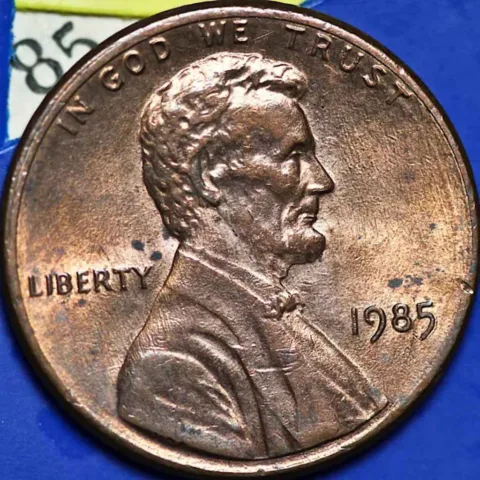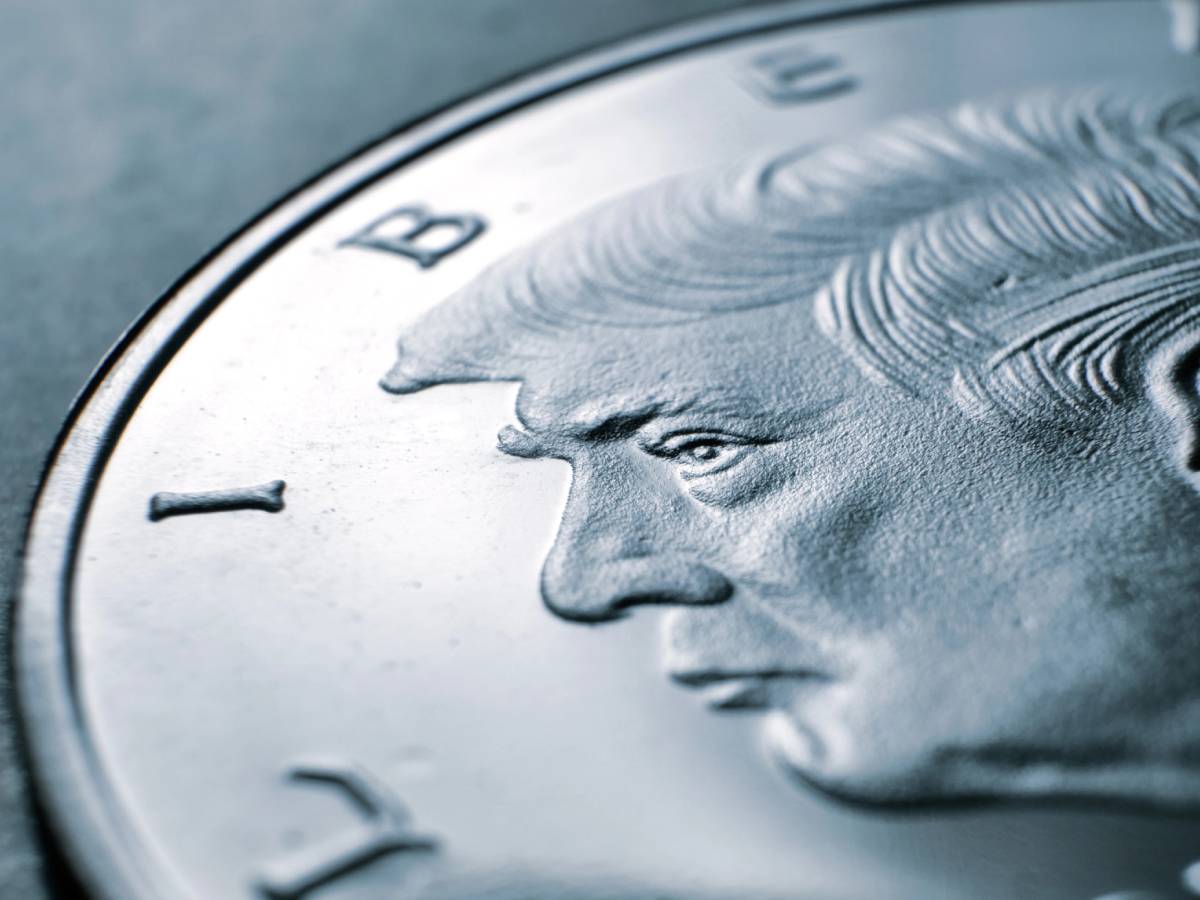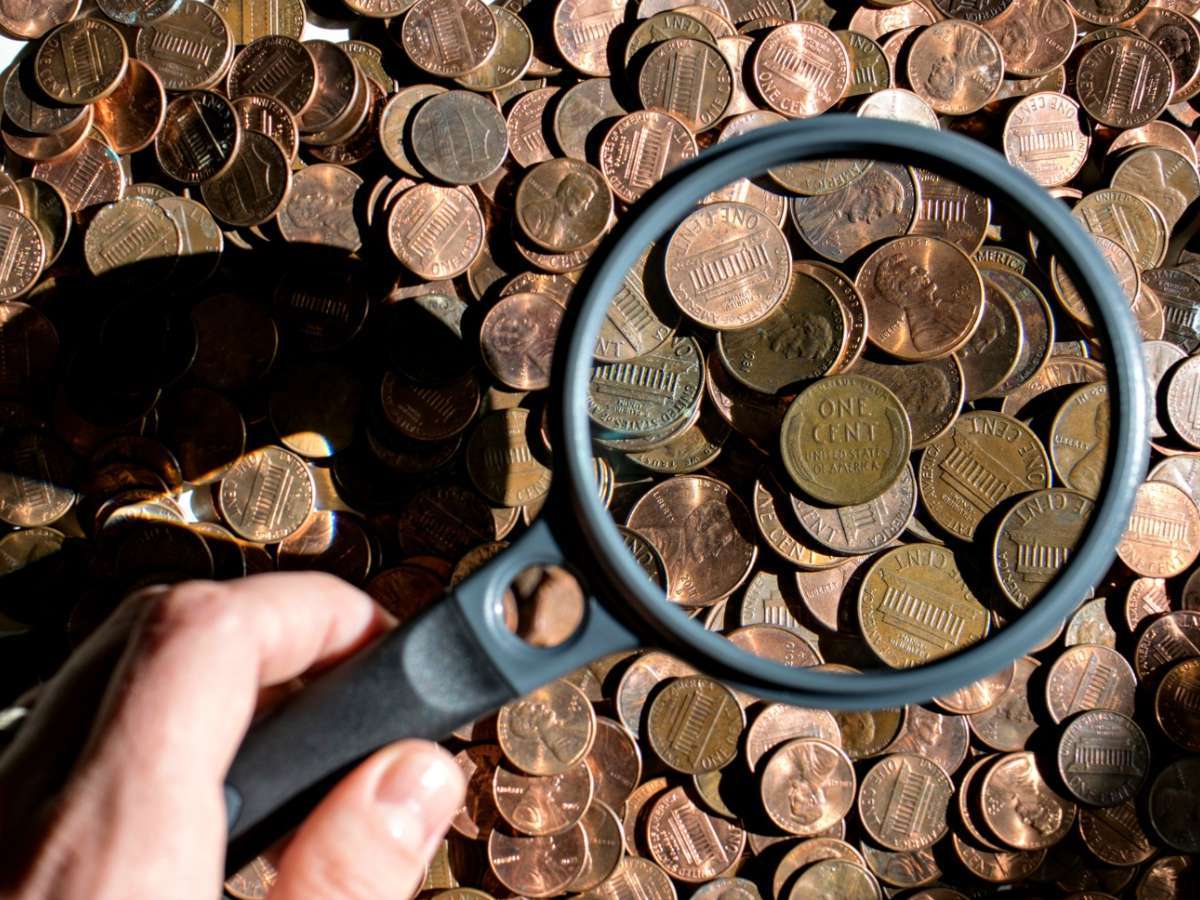
Have you found a 1985 penny and want to know if it’s worth more than face value?
There are many 1985 pennies that are worth hundreds, even thousands of dollars — but you’ve got to know what to look for.
Today we’re going to talk about the rare and valuable 1985 pennies that you can still find in pocket change (including 1985 penny errors) and their values.
1985 No Mintmark Penny Value
Chances are you’ve come across many 1985 Lincoln pennies without a mintmark in your pocket change. And you’re probably wondering if these pennies are rare or not.
With 5,648,489,887 pennies made at the Philadelphia Mint in 1985, a 1985 penny with no mintmark is not rare.
The 1985 no mintmark Lincoln penny was made from a copper-coated zinc composition — not from bronze, like all pre-1982 Lincoln Memorial pennies. (Pre-1982 pennies are automatically worth more than face value due to their valuable copper content alone.)
1985 pennies without mintmarks don’t contain enough copper (or other valuable metals) to really make them worthwhile to save at this time — at least not from the bullion standpoint.
Here’s how much they’re worth:
- A common, worn 1985 penny that you find in pocket change is generally worth only face value. But this doesn’t mean there aren’t any 1985 pennies worth saving… you’ll see why in a minute.
- Uncirculated 1985 no mintmark pennies (those that don’t have any wear and were never used as money) are typically worth 10 to 20 cents each.
- The most valuable 1985 penny with no mintmark sold for $5,875 in 2014 auction.
1985-D Penny Value
The United States Mint in Denver also struck billions of pennies in 1985. These all carry a little “D” mintmark under the date and were struck to the tune of 5,287,399,926 pieces.
Like the 1985 Lincoln cents from Philly, the 1985-D pennies are made from a cheaper copper-plated zinc composition and really aren’t worth saving if they’re worn.
While 1985-D pennies aren’t rare coins, there are some that are worth significantly more than their face value:
- Most uncirculated specimens are worth 10 to 20 cents apiece.
- The most valuable 1985-D penny fetched $5,635 in a 2010 sale.
1985-S Proof Penny Value
The U.S. Mint struck a limited number of special collector sets with proof coins — which were made at the San Francisco Mint on special presses with highly polished coin blanks.
The San Francisco Mint struck 3,362,821 proof pennies in 1985 with the “S” mintmark. These coins were included in special proof sets — which were sold to collectors for $11. These proof sets also contained a proof nickel, dime, quarter, and half dollar.
You can still buy 1985 proof sets from coin dealers. And since the U.S. Mint didn’t distribute proof coins through circulation, this is the only sure way that you can obtain a 1985-S Lincoln penny for your collection.
Here’s how much they’re worth:
- A typical 1985-S proof Lincoln penny is worth around $1 to $2.
- An especially nice specimen once sold for $180 in a 2020 auction.
1985 Brass Penny Value
When the United States Mint began making copper-plated zinc pennies in 1982, there was some degree of experimentation that continued for sometime afterward to perfect the way the metallic composition was mixed.
You can see this especially when looking at a lot of Lincoln pennies from 1983, 1984, 1985, and onward through the rest of the 1980s. Many of these coins exhibit heavy rippling, chips, and other imperfections caused by poor bonding of the copper plating to the zinc core and other issues with the composition. While somewhat unsightly, these are largely normal flaws that don’t bring any extra money.
But there were some issues with the 1985-D Lincoln cent that really stood out. Some 1985-D pennies have a yellowish appearance because they were plated in lighter-colored brass rather than reddish copper.
Here’s how much they’re worth:
- These yellow-colored 1985-D brass-plated pennies are worth anywhere from $25 to $50 in typical uncirculated grades.
IMPORTANT: What Is The Grade Of Your 1985 Penny?
To determine the true value of your 1985 Lincoln cent, you first need to know what condition (or grade) your coin is in.
Grab a coin magnifier and a copy of the U.S. Coin Grading Standards book. Then, watch this video to see how to grade coins yourself at home:
These coin grading apps make grading coins yourself much easier.
Rare 1985 Error Pennies To Look For
There are lots and lots of 1985 penny errors worth more than face value. So, how do you know what to look for? And how can you tell a legitimate error apart from common post-mint damage?
Let’s look at 5 of the most frequently encountered types of 1985 penny errors and what they’re worth:
#1 – 1985 Doubled Die Penny Error
The 1985 doubled die penny is worth looking for because it is a rare and valuable variety! There are a few kinds of 1985 doubled die pennies out there — including those that show light doubling in the lettering and date. These can be worth anywhere from $20 to $50 apiece, depending on the magnitude of the doubling and the condition of the coin.
#2 – 1985 Repunched Mintmark Penny Error
In the mid-1980s the U.S. Mint was individually hand-punching mintmarks into dies. This led to at least a few mistakes where the mintmark originally ended up in the wrong orientation or position before being repunched by U.S. Mint coiners.
Some of these repunched mintmarks can be rather drastic, while others are barely noticeable. But they all are varieties and are highly collectible.
Repunched mintmarks are ordinarily worth between $5 and $20.
#3 – 1985 Broadstruck Penny Error
Coins are generally struck inside a retaining collar — which helps form a raised rim on the coin and also ensures that it’s the right diameter and thickness. But when a coin is made outside of the retaining collar, the coin may be flatter and wider than normal.
These 1985 broadstruck penny errors aren’t necessarily rare, but they’re very uncommon and are highly collectible as well. They’re normally worth between $10 and $20.
#4 – 1985 Off-Center Penny Error
One of the more common errors out there is the off-center strike. This occurs when a region of the design is left missing from the coin — because either the blank (or planchet) was not properly centered or the dies were misaligned on the press.
Off-center errors can range from being as little as 1% to as large as 99% askew.
The least valuable off-center errors are those that are less than 10% or more than 60% off center. These are relatively common and tend to have a value of $10 to $20.
The most valuable off-center errors are the kinds that are around 50% off-center yet still show a complete date and mintmark. They’re worth around $50 to $100.
#5 – 1985 Die Break / Die Crack Penny Error
The designs on coins are produced by dies — and as these dies age, they may develop cracks.
These die breaks generally appear on struck coins as raised lines, squiggles, and bumps.
Die cracks range in value from $3 to more than $150, depending on the magnitude and location of the break.
One of the more common types of die breaks unique to Lincoln pennies is known as the BIE error — in which a short, vertical die crack (roughly resembling the capital letter “I”) appears between the letters “B” and “E” in the inscription “LIBERTY.” These pieces are typically worth $5 to $10.




